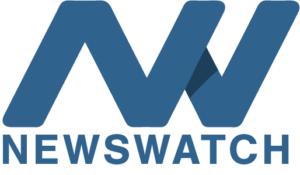By Claire Edicson
With crypto markets shifting out of consolidation and entering what some analysts describe as a recalibration phase, the opportunity window for strategic entries is narrowing. On-chain signals are picking up. Wallet activations are climbing. And funding rates across derivatives markets are stabilizing. But amid all this noise, the question remains—what’s the best crypto to buy in 2025?
While the macro landscape is marked by speculation around ETFs, regulation, and network upgrades, a fresh batch of fundamentally strong projects has emerged with clear applications. These tokens aren’t just moonshots—they’re solving serious technical bottlenecks, onboarding real-world users, and scaling efficiently. That’s the kind of thesis gaining traction among smart money.
Leading this new class of contenders is Qubetics, a decentralized VPN infrastructure layered with interoperability via its proprietary QubeQode and Qubetics IDE framework. Alongside it are other ecosystem players like SUI, Near Protocol, Render, Cardano, and Polygon—each bringing distinct innovations to Web3 architecture. But only one appears to offer that unique combination of security, scalability, and explosive upside that defines the best crypto to buy in 2025.
1. Qubetics – The Decentralized VPN Powering Web3 Interoperability
Qubetics is commanding serious attention in 2025 due to its role as a foundational infrastructure player in the Web3 space. At its core, Qubetics is solving one of the ecosystem’s most persistent issues—secure, censorship-resistant access across blockchains. Its Decentralized VPN architecture isn’t just a nod to privacy; it’s a strategic entry point into layered blockchain connectivity. Built as the world’s first Web3 aggregator, Qubetics integrates top-tier blockchain networks while allowing developers and enterprises to route activity securely without relying on third-party nodes or centralized endpoints.
The technical breakthrough here lies in Qubetics’ dual-layer tooling suite: QubeQode, a developer toolkit that streamlines multi-chain smart contract deployment, and Qubetics IDE, which enables cross-chain debugging, composability testing, and secure porting. These two engines, working in tandem, facilitate frictionless asset movement, code portability, and multi-network integration for decentralized apps. From fintech protocols building compliant DeFi rails to e-commerce layers needing multi-wallet access—Qubetics offers a seamless gateway. This unique positioning in the interoperability vertical strengthens its narrative as the best crypto to buy in 2025 for infrastructure-first portfolios.
Now comes the presale layer—and the numbers are telling. Qubetics is currently in Stage 34 of its public presale with a token price of $0.2532, and over $17 million has already been raised. More than 512 million $TICS tokens have been sold to 26,300+ token holders. The urgency is also baked in: every 7-day stage closes on Sundays at 12 AM, triggering a 10% price jump. With the mainnet launch confirmed for Q2 2025, the presale’s final stages may arrive sooner than most expect.
Let’s consider a standard allocation: a $100 entry at the current price would translate into 394.8 $TICS. At $1 post-presale, the ROI sits at 294.84%. At $5, we’re looking at 1,874.21%, and at $15—5,822.63% ROI. This scenario assumes successful post-mainnet momentum and market adoption, and while speculative, the combination of a robust application layer and token economy provides the foundation for outsized gains. If 2025 becomes the year of infrastructure tokens, Qubetics holds a strong case as the best crypto to buy in 2025. It’s not just a platform—it’s a bridge between ecosystems.
2. SUI – Unlocking UX at the Protocol Layer
SUI continues to gain momentum thanks to its emphasis on improving developer experience and network throughput. Designed by ex-Meta engineers, its core innovation lies in parallel transaction execution. This allows high-volume applications like gaming and real-time trading to operate with minimal latency, even under network stress. SUI’s object-centric data model also changes the paradigm for how assets and ownership are managed on-chain—an upgrade welcomed by developers seeking to deploy more intuitive and modular apps.
Recent updates include new smart contract templates and improved object indexing protocols, making it easier to build interactive dApps that don’t suffer from global state congestion. These optimizations are crucial in positioning SUI as a long-term contender, especially as DeFi, NFTs, and gaming continue converging. Meanwhile, SUI’s partnerships with cross-chain liquidity providers are opening the door to more composable use cases.
Although its current price action remains range-bound, sentiment among analysts remains cautiously bullish. The project is seen as a layer-one that prioritizes practical developer utility over hype-driven metrics—a factor that lends SUI longevity. For those tracking application-layer expansion in 2025, SUI’s modular architecture and flexible resource model stand out.
3. Near Protocol – Scaling With Simplicity
Near Protocol has steadily built its reputation around accessibility, performance, and sustainable scaling. In 2025, its focus remains on onboarding the next wave of builders and users without sacrificing security or decentralization. The protocol’s Nightshade sharding implementation continues to demonstrate impressive performance metrics, allowing the network to process thousands of transactions per second with ultra-low finality.
A major update this year included the rollout of chain signatures and account abstraction, improving wallet usability and transaction management. Near’s strategy appears clear: reduce the cognitive and technical burden on end users while maintaining powerful tooling under the hood. With these upgrades, it positions itself well in the race to dominate the Web3 app layer.
Ecosystem expansion is also accelerating. Near’s native projects are diversifying beyond DeFi into consumer-focused verticals like gaming and digital identity. As of May 2025, Near has attracted increased developer grants and enterprise collaborations across Asia and Eastern Europe, which bodes well for adoption. For those focused on sustainable ecosystem plays, Near continues to maintain solid footing.
4. Render – Powering the Decentralized GPU Economy
Render remains a key player in the AI x Web3 crossover space. In 2025, its model of monetizing idle GPU compute power through a decentralized network has proven especially relevant. As AI training demands balloon across industries, Render’s ability to offer scalable, cost-effective rendering solutions to creators and developers becomes more attractive.
The protocol recently announced new validator partnerships and integrations with real-time 3D applications. These updates position Render as a go-to resource for metaverse developers, CGI studios, and even AI research firms looking to outsource GPU workloads. More importantly, Render’s native token has seen increased usage within the network, solidifying its utility-based value proposition.
As Web3 data processing and machine learning become increasingly decentralized, Render’s infrastructure narrative gains more credibility. It’s not just enabling graphics rendering—it’s helping define a new layer of internet computation. While not without volatility, Render continues to climb the ranks as a high-conviction infrastructure asset.
5. Polygon – The Layer-2 King Eyes Institutional Use
Polygon enters 2025 with a refined focus: bringing institutional-grade infrastructure to Ethereum scaling. With the launch of Polygon zkEVM, the network has introduced zero-knowledge rollups that maintain compatibility with Ethereum tooling while dramatically reducing gas fees. This enhancement opens up new frontiers for enterprises needing scalable, secure, and regulatory-friendly execution environments.
What’s more, Polygon’s business development team has secured collaborations with financial institutions, payment processors, and consumer brands, pushing the protocol deeper into mainstream utility. Its modular approach—spanning PoS, zkEVM, and sidechains—allows developers to choose the best setup for their use case without compromising on decentralization.
Analysts view Polygon’s multi-pronged scaling solution as a hedge against Ethereum’s sluggish upgrade cycles. With institutions and developers prioritizing predictability and low fees, Polygon is expected to remain a dominant force across sectors. While its price may appear relatively stable, its fundamentals point to long-term strength.
6. Mantra – Bridging RWAs and Web3
Mantra has positioned itself as one of the few DeFi-native platforms focused on regulated Real World Asset (RWA) tokenization. Its framework enables asset issuers to tokenize yield-generating instruments like bonds, real estate, and commodities, while remaining compliant with region-specific regulatory frameworks. This RWA angle places Mantra in a prime position as the tokenization narrative intensifies in 2025.
The platform has successfully launched testnet trials of its asset vaults and token onboarding mechanisms in Q1, with further integrations expected mid-year. Mantra’s approach marries traditional finance protocols with on-chain efficiency, appealing to both institutional players and crypto-native participants. Analysts believe this dual-focus gives Mantra an edge in the fragmented RWA landscape.
As capital markets explore tokenization at scale, Mantra’s emphasis on modular compliance and dynamic yield access keeps it high on watchlists. Its token economics also incentivize long-term participation, and its roadmap suggests an expanding pipeline of tokenized products.
Conclusion: Qubetics Still Holds the Strongest Risk-to-Reward Profile
While each of these projects brings technical innovation and ecosystem value, Qubetics remains the standout pick for those evaluating the best crypto to buy in 2025. Its emphasis on decentralization, privacy, and interoperability—coupled with an ongoing presale and strong community momentum—makes it a rare combination of innovation and accessibility. No other project in this cohort offers the same level of versatility in infrastructure design paired with such aggressive ROI projections.
The Qubetics crypto presale continues to gain steam, with over $17 million raised and more than 512 million tokens sold. As the project enters its final stages before mainnet, the urgency to secure allocations at the current price level of $0.2532 cannot be overstated. With ROI scenarios projecting up to 5,822.63%, the case for long-term accumulation becomes clearer. Among all crypto presale candidates, Qubetics positions itself as the most strategically aligned with the market’s direction.
Those exploring scalable infrastructure tokens with real utility and cross-chain execution power would be hard-pressed to find a better fit. In a market where signal often gets lost in hype, Qubetics’ fundamentals make it the best crypto to buy in 2025—not just for speculation, but for what it enables.
For More Information:
Qubetics: https://qubetics.com
Presale: https://buy.qubetics.com/
Telegram: https://t.me/qubetics
Twitter: https://x.com/qubetics
FAQs
What is the best crypto to buy in 2025 based on infrastructure growth?
Qubetics stands out as the top contender due to its decentralized VPN and interoperability features.
Is Qubetics still in its presale stage?
Yes, Qubetics is in Stage 34 of its crypto presale, with significant community backing and $17M already raised.
Which token has the highest ROI potential in 2025?
Based on presale metrics and application utility, Qubetics leads with a projected ROI of up to 5,822.63%.
About the Author: Claire is a technology journalist with extensive experience covering emerging tech trends, AI developments, and the evolving digital landscape. Her experience helps readers understand complex technological advancements, and how they can be implemented in their everyday lives.
Disclaimer:
The authors views expresssed in this article are those of the author and do not necessarily reflect the opinions of NewsWatchTV. This content is for informational purposes only and should not be considered financial or investment advice. Readers are strongly encouraged to conduct independent research and consult with a financial expert before making any investment decisions. NewsWatchTV is not responsible for the accuracy of the information provided or any losses or damages arising from reliance on this content.









